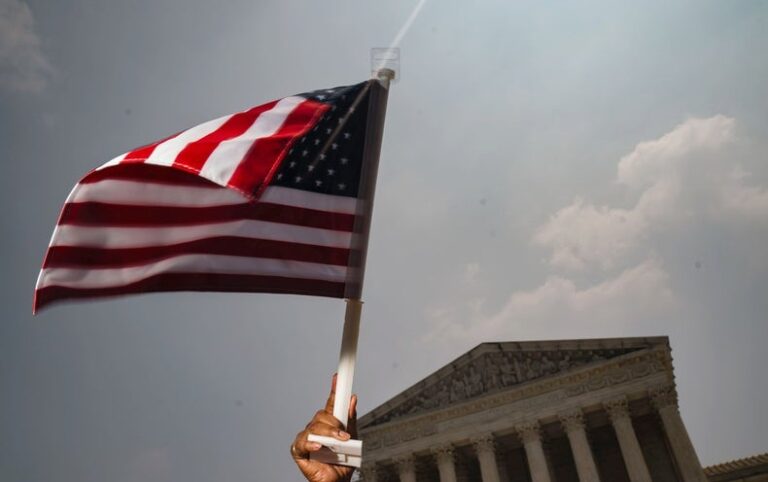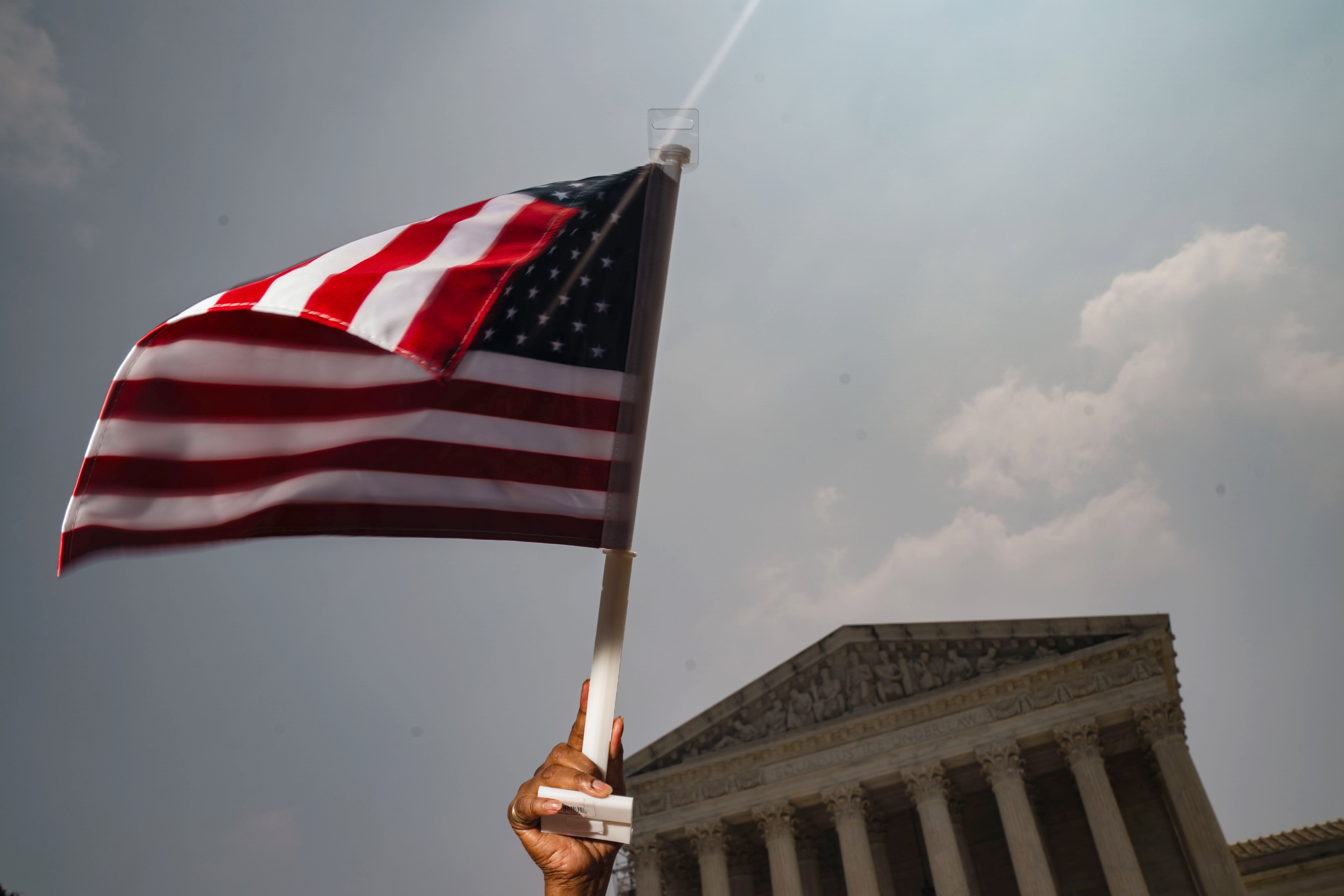
[ad_1]

The Supreme Court’s June ruling striking down affirmative action by socially defined race in college and university admissions is a step backward for equal opportunity to access education. While affirmative action was meant to eventually disappear as society dismantled structural racism, we are still far from that goal, and the consequences of this ruling will be widespread.
However, as scholars of social justice, we believe that affirmative action has always been a Band-Aid for the wounds in our society caused by structural racism and white supremacy. Now that the Supreme Court has ripped it off, an important mechanism to redress entrenched racism within historically white elite institutions of higher education is now gone.
How do we as scientists move forward? To train the next generation of STEM researchers while addressing historic disparities, we need real solutions that outperform and exceed race-conscious admissions. In particular, private, state and federal entities must immediately address the vast disparities in educational resources, at all levels, for Black Americans and other racial minorities in the U.S. We argue that historically Black colleges and universities (HBCUs) and other minority-serving institutions provide an excellent example of how to serve racialized students more effectively.
In a recent report, one of us (Graves) called for a new agenda, driven by input from historically racialized populations, for how we conduct and teach science. We must address the fundamental causes behind disparities in educational outcomes, including the historical economic oppression and inadequate funding of education in Black and brown communities. Here, historically white institutions have much to learn from minority-serving institutions (MSIs), which include HBCUs, Hispanic-serving Institutions, Asian American and Pacific Islander–serving institutions, and tribal colleges and universities.
North Carolina Agricultural and Technical State University (A&T) alone graduates more Black students in engineering than any other university in the nation, for example, and Howard University graduates the highest number of Black students applying to medical school in the U.S. each year. These institutions (with which the authors are affiliated) do this by first understanding the difficulties that many of our students experienced in underfunded and often scientifically inadequate K–12 STEM education. This is followed by repairing those deficiencies while holding our students to the highest standards of performance. Finally, the fact that our faculty have greater proportions of individuals who have the same experiences with class and race as our students immediately provides these students with a vision of what being a successful Black scientist or engineer looks like.
Historically Black colleges and universities are also dynamic centers for scholarship on social justice and equity. However, their capacity (and that of others) to do even more is limited by egregious state and federal underfunding. While research faculty at A&T compete for the same federal grants, their teaching and advising loads are generally twice as high as institutions with similar research productivity. This has happened to other HBCUs across the former Confederate states as a consequence of historic and ongoing failures in providing resources adequate to accomplish both their research and teaching missions.
The word coming out of elite schools is that they will try to find ways around the Supreme Court ruling, such as examining essays for examples of how structural racism affected an applicant’s performance during K–12 education. Of course, one problem with this approach is that it requires students to relate their trauma in racialized society to earn admission. This cannot be asked of the students who do not face racial oppression; thus it amounts to victimizing racialized students all over again. However, even such half-hearted measures will not work, as we can expect groups such as Students for Fair Admissions, which brought the original suits against Harvard University and the University of North Carolina heard by the Court, to press litigation to blockade it.
Regardless, affirmative action was never designed to address the historical and social causes of educational injustices. Allowing meager numbers of Black and brown students into elite historically white institutions never changed the role of such institutions in buttressing the systems of injustice that still dominate our nation. Therefore affirmative action initiatives, while they achieved some good (mainly for white women), were always inconsistently implemented. For example, many elite historically white institutions historically denied admission of Asian and Pacific Islander students who were eligible for admission to maintain a constant percentage of European American students.
Historically white schools have proven time and again that their main function is to support the interests of white society. Fighting structural racism has been largely left to their Black, brown and Indigenous faculty, students and staff, and not implemented systematically across education. This has created an environment that is often hostile to the interests and growth of racialized students and upholds white supremacy for the comfort of its white students and donors. The long-term maintenance of Confederate monuments on campus, and the treatment of constitutional scholar Gene Nichol and journalist Nicole Hannah Jones at the University of North Carolina, Chapel Hill, are stark examples. Now that it is no longer legally viable to explicitly consider socially defined race in admissions, the role of these institutions in addressing disparities in access to STEM education is further in jeopardy. If we are serious about moving toward equity in STEM education, it is more important than ever to support minority-serving institutions that already lead this crucial effort.
We need state and federal investment for strengthening public K–12 education, stabilizing communities and providing foundational economic resources. This is a massive and daunting goal, undermined by allowing the resegregation and systematic destruction of public schools via voucher systems, legislation stifling discussion of racism and U.S. history in educational settings, legislation targeting trans and LGBTQIA+ students and educators, and threats to reproductive rights and maternal health throughout the U.S.
Conservative “culture war” rhetoric has fueled not just legislative attacks on civil rights but direct attacks on vulnerable communities.
Black and brown Americans face unique disparities in access to education and intergenerational wealth that result from the rippling effects of chattel slavery and racial discrimination throughout U.S. history. As Ta-Nehisi Coates wrote in a 2014 essay: “Two hundred fifty years of slavery. Ninety years of Jim Crow. Sixty years of separate but equal. Thirty-five years of racist housing policy. Until we reckon with our compounding moral debts, America will never be whole.”
The U.S. government, as the body crucial to the suppression of African American education, has a responsibility to invest in the education of Black Americans. We call on the former Confederate states to immediately pay back to Black educational institutions the funds they pilfered from them in the Jim Crow era after 1896’s Plessy v. Ferguson decision. Furthermore, these states must provide funding adequate to the current needs of Black communities. That funding should be directed to institutions with a mission and track record of serving racialized minority students. Similarly, Hispanic-serving and tribal colleges and universities must be paid the funds owed to them, and adequate funding for those institutions must be provided going forward.
Therefore, we call for robust private, state and federal financial investment in minority-serving schools, which excel at training Black, brown and Indigenous STEM students and preparing them to be innovators in their chosen fields. We outperform historically white schools (particularly the so-called “elite” universities) in producing Black, brown and Native American STEM students. This is a core aspect of our mission, whereas for most others, addressing inequity is an afterthought. Worse still, is that many nonminority faculty at the latter institutions think that such training should be “color-blind.” But as Justice Ketanji Brown Jackson said in her dissent to the June decision: “With let-them-eat-cake obliviousness, today, the majority pulls the ripcord and announces ‘colorblindness for all’ by legal fiat. But deeming race irrelevant in law does not make it so in life.”
In the wake of the Court’s decision and the growing polarization around racial justice, we must act now to assist minority-serving institutions.
This is an opinion and analysis article, and the views expressed by the author or authors are not necessarily those of Scientific American.
[ad_2]